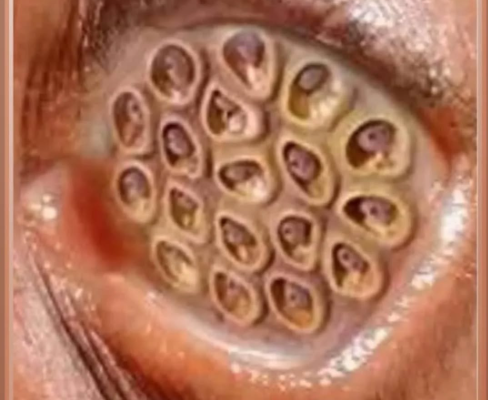Acne affects millions of people worldwide, impacting not just physical appearance but also emotional well-being. Whether you’re dealing with occasional breakouts or persistent acne, understanding the causes and exploring effective removal methods can help you achieve healthier, clearer skin. This comprehensive guide covers everything from understanding acne to professional treatments and natural remedies.
Understanding Acne: The First Step to Clear Skin
Acne develops when hair follicles become clogged with oil and dead skin cells. This creates an environment where bacteria can thrive, leading to inflammation and various types of acne lesions. Several factors contribute to acne development:
- Excess oil production: Overactive sebaceous glands produce too much sebum
- Dead skin cells: Irregular shedding of skin cells can block pores
- Bacteria: Propionibacterium acnes bacteria can trigger inflammation
- Hormonal changes: Fluctuations during puberty, menstruation, or due to certain conditions
- Genetics: Family history often plays a role in acne susceptibility
Professional Acne Removal Treatments
For moderate to severe acne, professional treatments offer significant advantages. These science-backed approaches are supervised by dermatologists and can address stubborn or recurring acne problems.
Chemical Peels
Chemical peels involve applying a solution that removes the outer layer of skin, unclogging pores and reducing inflammation. Different strengths are available depending on acne severity, with glycolic acid, salicylic acid, and trichloroacetic acid being common options. Results typically become visible after multiple sessions.
Laser and Light Therapies
These treatments target bacteria and reduce inflammation through specific wavelengths of light:
- Blue light therapy: Kills acne-causing bacteria
- Red light therapy: Reduces inflammation and promotes healing
- Photodynamic therapy: Combines light with a photosensitizing agent for enhanced results
Extraction Procedures
Performed by dermatologists, these procedures safely remove large cysts or deep pimples using specialized tools. While providing immediate relief, they should always be done professionally to avoid scarring.
Prescription Medications
A dermatologist may prescribe stronger treatments than what’s available over-the-counter:
- Topical retinoids: Prevent follicular plugging and reduce inflammation
- Oral antibiotics: Control bacteria and reduce inflammation
- Isotretinoin: For severe cystic acne resistant to other treatments
- Hormonal treatments: Particularly effective for women with hormonal acne
Over-the-Counter Solutions for Acne Removal
Many effective acne treatments are available without prescription. These products typically contain active ingredients that address different aspects of acne formation.
Key Ingredients to Look For
- Benzoyl peroxide: Kills bacteria and helps remove excess oil and dead skin cells
- Salicylic acid: Helps unclog pores and reduce inflammation
- Adapalene: A retinoid that prevents clogged pores and reduces inflammation
- Niacinamide: Reduces inflammation and may help regulate oil production
- Sulfur: Removes dead skin cells and excess oil
Building an Effective Skincare Routine
Consistency is crucial for acne management. An effective routine typically includes:
- Gentle cleansing: Twice daily with a non-irritating, pH-balanced cleanser
- Treatment products: Applied after cleansing, containing acne-fighting ingredients
- Moisturizing: Even oily skin needs hydration—choose non-comedogenic formulas
- Sun protection: Daily SPF 30+ sunscreen prevents post-acne dark spots
Natural Approaches to Acne Management
For those preferring natural options, several evidence-supported remedies can complement conventional treatments.
Dietary Considerations
While research continues to evolve, some dietary changes show promise:
- Low-glycemic diet: Reducing sugar and refined carbohydrates may help some people
- Dairy reduction: Some studies suggest a connection between dairy consumption and acne
- Anti-inflammatory foods: Omega-3 fatty acids, colorful fruits, and vegetables support skin health
Natural Topical Remedies
- Tea tree oil: Has antimicrobial properties similar to benzoyl peroxide but is gentler
- Green tea extract: Contains antioxidants that may reduce sebum production and inflammation
- Aloe vera: Soothes inflammation and promotes healing
- Honey: Has antibacterial properties and can help with wound healing
Lifestyle Factors That Impact Acne
Several daily habits significantly influence acne severity and treatment effectiveness.
Stress Management
Stress triggers hormonal changes that can worsen acne. Techniques like meditation, regular exercise, and adequate sleep can help manage stress levels and potentially improve skin health.
Environmental Factors
- Humidity and heat: Can increase sweat and oil production
- Pollution: May clog pores and trigger inflammation
- Friction from clothing or equipment: Can cause acne mechanica, a form of acne from physical irritation
Preventing Acne Scarring
Early and effective treatment is the best approach to prevent scarring. Additionally:
- Avoid picking or squeezing acne lesions
- Use sun protection to prevent post-inflammatory hyperpigmentation
- Consider treatments specifically for acne scars if they develop
When to See a Dermatologist
While many cases of acne respond well to self-care, consult a dermatologist if:
- Your acne is severe, painful, or cystic
- Over-the-counter products haven’t helped after three months
- You’re developing scars
- Acne is causing significant psychological distress
Conclusion
Acne removal requires patience and often a multi-faceted approach. By understanding the causes of acne and exploring various treatment options, you can develop an effective strategy for clearer, healthier skin. Remember that results take time, and what works for one person may not work for another. The journey to acne-free skin is personal, but with persistence and potentially professional guidance, significant improvement is achievable for most people dealing with acne concerns.


